Manga Artist Interview Series (Part I)
The Manga Series > Hentai > Toshio Maeda > Takeshi Oshima > Rui Hashimoto
Walk into a convenience store in Japan around lunchtime and the area surrounding the magazine rack will be swamped with dozens of people of all ages and walks of life, huddling close together, and silently reading magazines. While many focus on the sports or entertainment weeklies, the majority read manga. It is a time for relaxation.
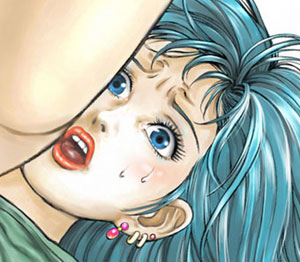 But this scene might not be unique to Japan for long. Overseas, too, interest in manga is booming. Last month Shonen Jump debuted in the U.S. with the printing of a condensed English version of some of its wildly popular manga series.
But this scene might not be unique to Japan for long. Overseas, too, interest in manga is booming. Last month Shonen Jump debuted in the U.S. with the printing of a condensed English version of some of its wildly popular manga series.
The genres are seemingly endless; from sports to history to romance, there is bound to be one to please even the most fickle reader.
Toshio Maeda's groundbreaking manga series Urotsuki Doji from the early '80s firmly placed him in the history books - in Japan and abroad - as the pioneer of the genre known as hentai, or perverted. This work featured violent and graphic images of shapely young women being probed, felt, and fondled by the tentacles, elongated tongues, and miscellaneous extensions of creatures and men alike. Manga would never be the same again.
From that auspicious beginning, Maeda's work blossomed over next two decades, one tentacle at a time. Though a recent traffic accident has left him with limited drawing abilities, next year - fresh on the heels of the worldwide success of his recent La Blue Girl animation series, he plans on releasing a new animation feature and contributing to the women's hentai manga magazine Amour. In preparation for the latter, he is being forced to change gears; much to his chagrin, he is poring over scripts for such TV shows as Ally McBeal to "understand women's feelings." This is in the hopes of creating a hentai piece that will satisfy the demands of females.
In light of manga's growing popularity, the Captain will this week offer his first installment in his Manga Artist Interview Series: profiles of some of Japan's masters. The series begins with excerpts from his second conversation at an Akihabara coffee shop with the master of tentacle violation.
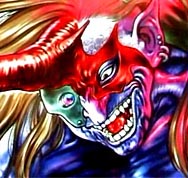 Profile
Profile
Name: Toshio Maeda
Age: 49
Home: Toyocho, Tokyo
Hobbies: Golf and studying English
Epitaph will read: "Tentacle Master"
Interview
Captain Japan: When we spoke before, you said that your influences were not Japanese comics like Mighty Atom. Instead, you read Mighty Mouse, Spiderman, and Batman when you were young. Can you talk about your influences?
Toshio Maeda: Also Disney, typical style, such as Fantasia. Fantasia is a little bit too sophisticated - it has class. So when I was young, I couldn't understand the quality. Of course, now I do. To a kid, it is a little bit too difficult to understand how great it was.
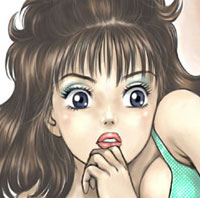 I was influenced and fascinated by the American style. Bernie Wrightson - Swamp Thing. Neil Adams, Joe Kubert, and Gil Kane. 'Genius' is what I call them. They are all living inside of my work.
I was influenced and fascinated by the American style. Bernie Wrightson - Swamp Thing. Neil Adams, Joe Kubert, and Gil Kane. 'Genius' is what I call them. They are all living inside of my work.
CJ: When you were 16 years old you came to Tokyo from Osaka to be an assistant to a professional cartoonist. What were those days like?
TM: At that time, I already knew all about manga. I was self-taught. I learned a lot just through reading manga. Since I was 5 or 6 I had been reading a lot of manga. I was crazy about manga - a manga geek or a manga buff, I was.
At that time, we Japanese people were all poor. There was a certain system, a rental system, like rental video shop nowadays. We went to a rental bookstore. It was cheap, nothing like today. The size [of the book] was much smaller. Not so many stories and I believe 20 yen for a day, or a couple of days...sometimes 10 yen for a day. That is why I could read that style of manga. We called it kashihon (book lending).
CJ: In American comics, like Spiderman or Batman, there is the hero, but in manga it is different - there are no heroes or bad guys. Can you explain that?
TM: People [in Japan] got fed up reading the same style of manga. In the U.S., I think [it] should be kept, in a way, because certain ages of kids read it, right? So it should be a simple, a plain story - good guy fighting bad guy - is quite understandable.
In Japan, we are living in a so-called homogeneous society, and compared to American society it is a mixed culture. In a homogeneous society - to a certain level, if we read a difficult story, we can understand it because we have a lot of things in common; we are on the same wave. But in America, or another Western country, the culture is so mixed. The people are coming from other countries. They don't have just one culture, they are diverse.
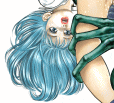 They [Americans] are capable of creating a complicated story. I know that. But if they did it, a kid would not like it. So in a way, we have to educate the reader, the audience, to a certain degree. In doing so, we can educate ourselves as to what type of manga we should create in the future.
They [Americans] are capable of creating a complicated story. I know that. But if they did it, a kid would not like it. So in a way, we have to educate the reader, the audience, to a certain degree. In doing so, we can educate ourselves as to what type of manga we should create in the future.
Instead of reading literature, we [Japanese] simply read manga for grownups. I strongly recommend to youngsters: read literature. But it is an art book, 'art literature' we call it. It is easier to read, it is cheaper.
Before I was age 20, I had read more than 10,000 books of literature. All sorts of books, so many genres and fields of books. I was really interested in reading and watching movies. That [is what] made me a professional cartoonist.
CJ: What kinds of literature?
TM: Any classics...any kind of genre, including obscene books. I believe reading books makes you different. But reading only manga will get you nowhere (laughs)...Even though I am a professional cartoonist and it is my meal ticket to sell manga.
But reading manga is just fun. That's all. It doesn't make yourself better. So I strongly recommend to youngsters to not just read manga, but also to read books and listen to music.
CJ: Can you talk about how the tentacle came to be used in your work?
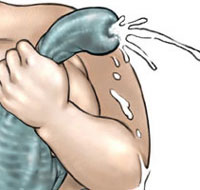 TM: At that time [pre-Urotsuki Doji], it was illegal to create a sensual scene in bed. I thought I should do something to avoid drawing such a normal sensual scene. So I just created a creature. [His tentacle] is not a [penis] as a pretext. I could say, as an excuse, this is not a [penis], this is just a part of the creature. You know, the creatures, they don't have a gender. A creature is a creature. So it is not obscene - not illegal.
TM: At that time [pre-Urotsuki Doji], it was illegal to create a sensual scene in bed. I thought I should do something to avoid drawing such a normal sensual scene. So I just created a creature. [His tentacle] is not a [penis] as a pretext. I could say, as an excuse, this is not a [penis], this is just a part of the creature. You know, the creatures, they don't have a gender. A creature is a creature. So it is not obscene - not illegal.
Drawing intercourse was, and is, illegal in Japan. That is our big headache: to create such a sensual scene. We are always using any type of trick.
CJ: The high school girl seems to be a common victim. Why is that?
TM: [sighs] Personally I don't like it. In Japan, so many maniac people like the innocent type of young girl. It is their taste. It is almost criminal.
I don't like for some young girl to be kidnapped or raped. I don't like that style. I like a style based on a Japanese samurai or ninja falling in love with a regular girl.
It [my style] is obscene. But from my point of view it is totally different.
CJ: What was behind the creation of the landmark Urotsuki Doji?
TM: At that time, I was dealing with manga for an adult magazine. I really wanted to create something different, but the editor wanted me to create some regular manga for adults - like a typical type of salaryman falling in love with an office lady...such type of boring story. But I just wanted to make something different. The chief editor - he was against my idea, but I insisted.
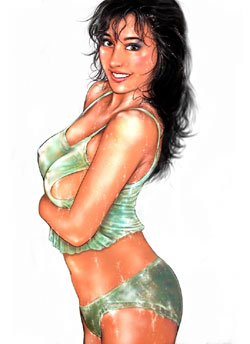 CJ: What were your early days as a cartoonist like?
CJ: What were your early days as a cartoonist like?
TM: Before I became [an] independent [cartoonist], I was wondering which way to go: manga for kids or manga for grownups. I chose manga for grownups because there are so many taboo in kids' manga...not only sensual scenes, but also religion and political themes.
I did some work as a kids' manga cartoonist actually, but as soon as I began to do my work I was fed up with the rules and codes. For an example of what I mean, there was an incident with Green Lantern. Neil Adams drew a scene in which a man or boy was going to give a shot into his arm and he had to rewrite it because that type of scene was a sensitive issue. That is what I am talking about.
CJ: Do you ever have young kids that wish to be apprentices under you?
TM: (grimaces) So many kids. They want to be a professional cartoonist through my firm. But I am quite happy to make an amateur a professional.
In the beginning, they have nothing; some are good, but I like to choose the bad students. I like to take them from to nothing to [the level of] professional cartoonists. I just emphasize: guts and perspective. If they have enough balls, you know, or are smart enough, or have a unique enough outlook, I think they can make it as a professional. It has nothing to do with their skills in doing art.
Being an assistant or professional cartoonist is hard work. Do you have the guts to work 8 days a week? No time for R&R - just working and working, nothing else.
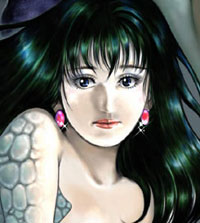 CJ: What do you think of the success of Spirited Away?
CJ: What do you think of the success of Spirited Away?
TM: I really admire that [Hayao] Miyazaki [director] is keeping with his style. It is, you know, really quite tough to keep your own style. In the beginning his work was not selling a lot. They were struggling with great difficulty to make something new with a small budget. I really admire that.
Myself, I am not a man who prepares for a rainy day. I have an easy money policy. A cartoonist has to be on the edge - standing against the strong wind. That is why I am always trying to seek something dangerous.
CJ: Can you discuss your upcoming contribution to the women's hentai manga magazine?
TM:Actually it [women's hentai] is totally different. It is from a woman's point of view. It looks similar but the concept is totally different.
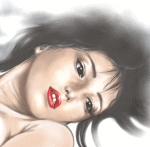 No one in Western countries can imagine that this type of magazine is quite popular among Japanese ladies because Japanese ladies are considered conservative. But actually, they are maniacs sometimes.
No one in Western countries can imagine that this type of magazine is quite popular among Japanese ladies because Japanese ladies are considered conservative. But actually, they are maniacs sometimes.
When they know I am a cartoonist for x-rated manga, they openly talk about sex with me. They don't hesitate to talk about themselves - how they are horny, or how they are lonely...using a dildo. But I don't believe it. Well, actually I don't like to believe it. Personally, I like a conservative lady - innocent, old-fashioned type.
Note: All drawing images courtesy of Toshio Maeda. A special thanks goes to Freedom Lohr at TokyoDV for assisting in this article.
The Manga Series > Hentai > Toshio Maeda > Takeshi Oshima > Rui Hashimoto

